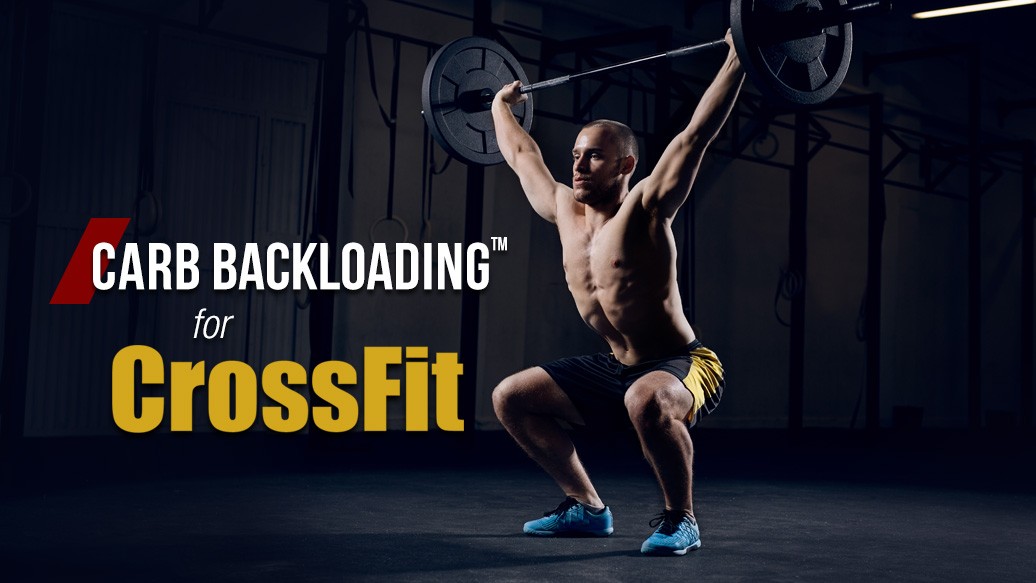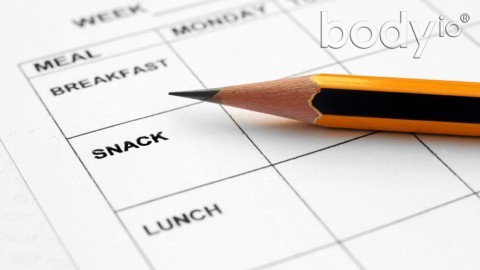or those of you currently using CrossFit as your form of training or exercise, you should be familiar with the general Crossfit prescription of nutrition: a diet based on vegetables (especially greens), lean meats, nuts and seeds, limited starch and no sugar. The recommended macronutrient breakdown is typically 30% protein, 30% fat and 40% carbohydrates.
Like most CrossFitters, you’ve likely spent some time adjusting your food choices and food quality while learning about the Paleo or Zone diet, but what about Carb Backloading™? More recently within the CrossFit community, there have been several discussions concerning the topic of cycling carbohydrates based on training volume.
For those of you that are already familiar with Kiefer’s work and have read Carb Backloading (CBL) you may recall him stating that it was not intended to be used with CrossFit training. However, since the addition of a CrossFit coach to the Body IO® team, we’ve received several questions on how to best utilize CBL for the average Crossfit trainee. Based on my personal success, as well as the success of many of my clients, I have found the CBL program to be very beneficial, as it can accomplish the two most commonly requested goals of the clients I see in our gym: 1) Fat loss and 2) Lean muscle gain.
When adhering to any nutritional protocol, there’s typically an elimination or reorientation phase. The Carb Backloading protocol begins with a 10-day preparation phase that allows your body to deplete its current primary fuel source—glucose. Ultimately, this transitions into burning stored body fat or dietary fat as fuel. In this phase, you are training your body to what is known as fat adaptation, which increases the ease with which you can switch between fuel sources in the future.
Is the Preparation Phase Necessary?
The preparation phase is highly beneficial, especially to those who are switching from anything other than an ultra-low carb/ketogenic diet, even if it is “paleo”. How long you need to be in your prep phase can be somewhat subjective and should be based on what your diet consists of at the present time. In my experience, shortening the 10 days to 8 can be done if you are already fairly lean, have a primary goal of building muscle, and have been following a relatively low-carb diet. Shortening this phase any further is not beneficial.
Can I train during the prep phase?
The best approach during this time is to lower your training/frequency over the 10-day prep phase. A common problem within the CrossFit community is that people are so dedicated to their daily workouts that they cut corners with the prep phase but this bites them in the end—especially for women.
While you can continue to work out, doing some accessory or skill work, you should be aware that as your body goes through the depletion process and works towards fat adaptation, you will feel pretty drained. During this time, you should understand that you are setting yourself up for future benefits, so your current training volume may need some adjusting.
What it actually looks like…
During the preparation phase, carbohydrate intake will be kept to 30 grams or less. Your best options will be to get these grams from vegetables, preferably green leafy ones. As a general starting point, your protein and fat grams should typically be at a 1:1 ratio per pound of lean body mass. When you reach Day 10 or the end of your prep phase, you will have your first Carb Backload. Some people choose to have a full Carb Nite, and most of my clients consume these carbs between the hours of 4-9 pm. If you train in the morning, it is still optimal to hold off your carbs until later in the day.
After the 10-day prep phase, you’ll hit the gym for a heavy training day and then start implementing a CBL based around your training. It is important to note that this doesn’t necessarily mean that you eat carbs just because you trained. We are focused on the next day’s training. You aren’t so much eating to recover from your workout as much as you are preparing for the next day’s exertion. If tomorrow is a rest day, keep your carbohydrate grams within the 30-gram-or-less limit; also, your daytime nutrition should not change from what it looked like during the initial prep phase.
I recommend that my clients keep track of their overall caloric intake and macronutrient breakdown through the use of a food-tracking app. This will be important when trying to lean out and will be the easiest way to see if adjustments need to be made to your intake levels based on your overall results.
Just how many Carbs can you eat?
Your first Carb Backload is a critical time to pay attention to how your body responds. If you wake up feeling puffy, as though you’re retaining water, then you have likely overdone it. On the flip side, if you go into your training session and feel deflated and tired, then you should try increasing your carbohydrate intake on your next backload. The exact carb dosage is highly individualized, but my general recommendations for female clients is .5 – .7 grams per lb. of lean body mass and 1.0 -1.5 for males.
The most important piece of any nutrition protocol is paying attention to how your body responds and sticking it out long enough to get a good evaluation of whether or not your approach is yielding your desired results. More often than not, I see clients switch to a new training program or nutrition protocol every few weeks, which doesn’t allow enough time to benefit from any of them. Ultimately, this leads to mass confusion in regards to personal goals and leaves one feeling and looking okay, but not great, unsatisfied and still searching. It is critical to understand that you are buying into something that will yield results, but you have to remain persistent and patient.












